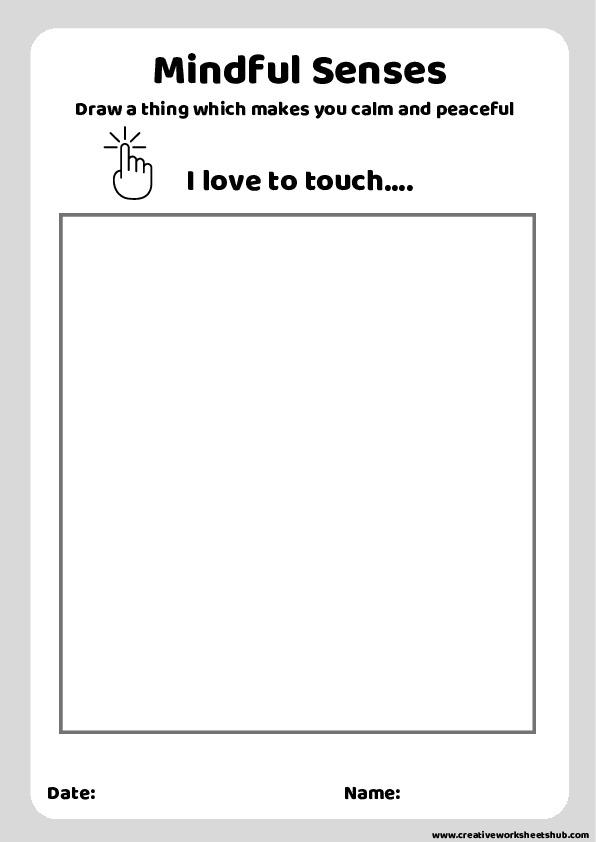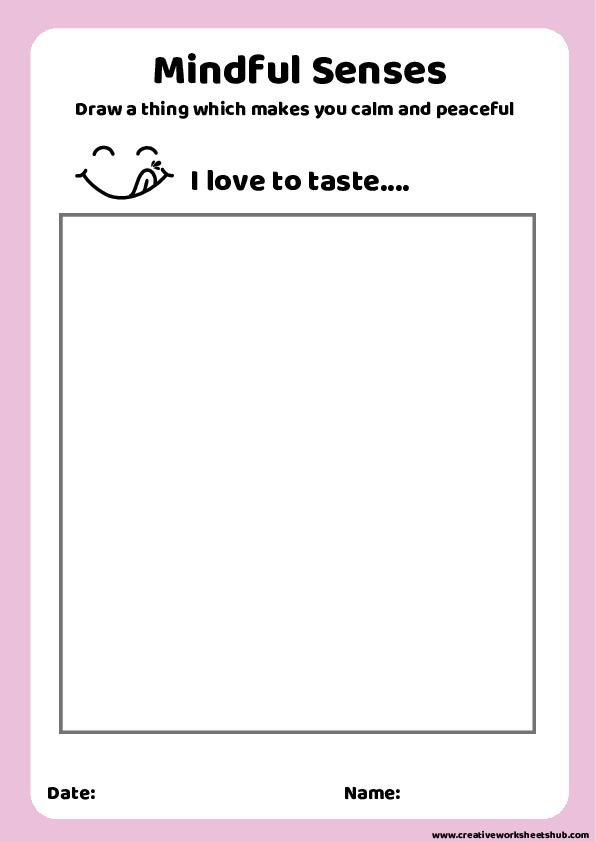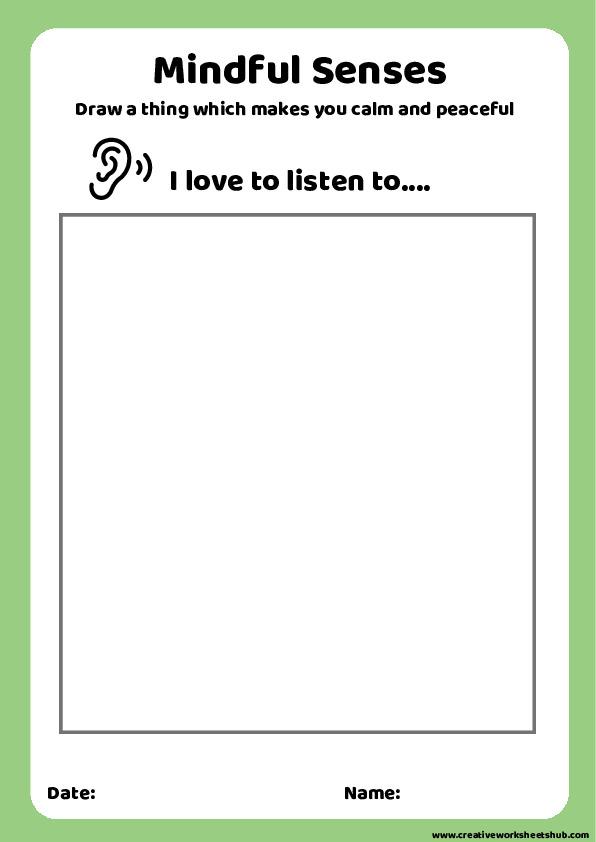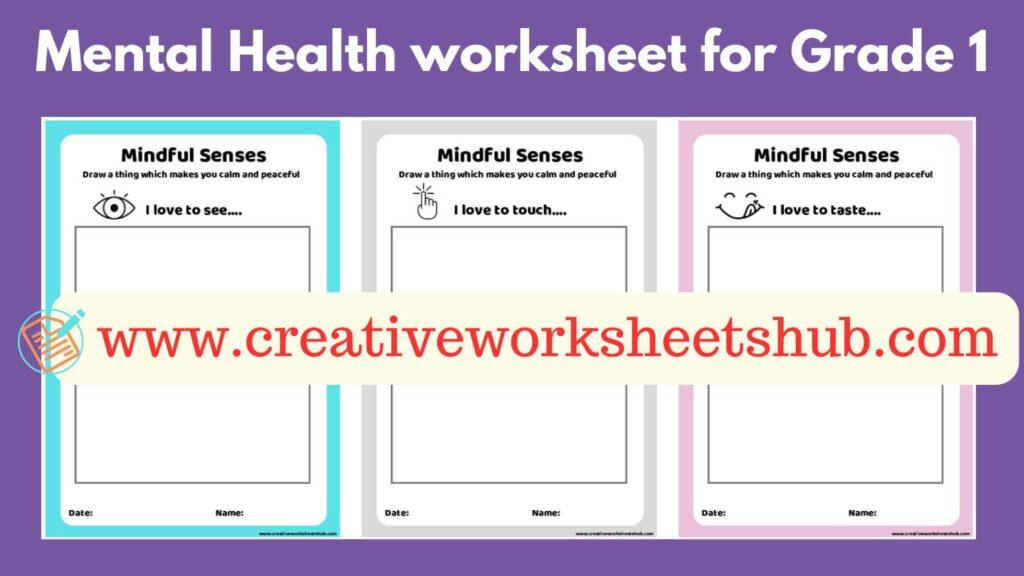




Mental Health worksheet for Grade 1: A Journey into Present-Moment Awareness
In the early years of a child’s education, developing a sense of Mental Health worksheet is crucial. Mindfulness helps children connect with their surroundings, understand their emotions, and enhance their focus. One of the most effective ways to introduce mindfulness to Grade 1 students is through engaging worksheets that explore the five senses. These “Mindful Senses” worksheets can guide young learners to experience the world around them with heightened awareness, making each moment a valuable learning opportunity.
Understanding Mental Health worksheet and the Five Senses
Mindfulness is the practice of being fully present in the moment, aware of where we are and what we’re doing without becoming overwhelmed by our surroundings. For first graders, mindfulness can be a transformative practice that helps them stay calm, focused, and emotionally balanced. By paying attention to their five senses—sight, hearing, smell, taste, and touch—children can develop a deeper connection with the world around them.
Mindful Senses Worksheets are designed to encourage children to explore their environment through these five senses. By engaging with these worksheets, students learn to observe their surroundings more closely, appreciate small details, and develop a sense of gratitude for the simple pleasures in life.
See more Worksheets like this here
The Importance of Mindful Senses in Early Education
Teaching mindfulness through the five senses offers several benefits for young learners:
- Enhanced Focus: By paying attention to specific sensory experiences, children learn to concentrate on the present moment, reducing distractions and improving their ability to focus on tasks.
- Emotional Regulation: Mindfulness activities help children identify and manage their emotions by connecting them to their physical sensations, leading to better emotional control.
- Increased Curiosity: Exploring the world through the senses encourages curiosity and a love for learning, as children become more engaged with their environment.
- Stress Reduction: Mindful sensory activities can be soothing, helping children calm down during stressful situations and promoting a sense of well-being.
- Social Skills Development: As children learn to be mindful of their own experiences, they also become more empathetic and understanding of others, enhancing their social interactions.
Mental Health worksheet for Grade 1
Here are some engaging topics for Mindful Senses worksheets that can be used in a Grade 1 classroom:
1. Seeing with Mindful Eyes
Sight is one of the most immediate senses we use to experience the world. A worksheet focusing on “mindful seeing” can encourage children to pay close attention to the visual details around them. This activity helps them notice colors, shapes, and movements they might otherwise overlook.
2. Hearing with Mindful Ears
Hearing is another powerful sense that can be explored through mindfulness. A worksheet on mindful listening can help children tune into the sounds around them, whether it’s the ticking of a clock, the rustling of leaves, or the chirping of birds.
3. Smelling with a Mindful Nose
Smell is a sense closely linked to memory and emotion. A “mindful smelling” worksheet can guide children to explore different scents and reflect on the feelings or memories they evoke.
4. Tasting with a Mindful Tongue
Taste is a sense that can be explored with great enjoyment. A worksheet on mindful tasting can help children focus on the flavors they experience, encouraging them to savor each bite.
5. Touching with Mindful Hands
Touch is a tactile sense that helps children connect with the physical world. A “mindful touching” worksheet can guide students to focus on the textures and temperatures of objects they encounter daily.
Integrating Mindful Senses Worksheets into the Classroom
To make the most of Mindful Senses worksheets in your Grade 1 classroom, consider the following tips:
- Incorporate Regular Practice: Make mindfulness a regular part of your classroom routine. Set aside a few minutes each day for students to complete a mindful senses activity, helping them develop a habit of being present and aware.
- Encourage Reflection: After each activity, invite students to share their experiences with the class. This can be done through group discussions, storytelling, or show-and-tell. Reflecting on their experiences reinforces the lessons learned and encourages peer learning.
- Create a Mindful Environment: Enhance the mindfulness experience by creating a calm and quiet classroom environment. Dim the lights, play soft background music, or introduce calming scents like lavender to set the mood for mindful activities.
- Connect with Nature: Whenever possible, take mindfulness activities outside. Nature offers a rich sensory experience, and exploring the outdoors can make mindful senses activities even more engaging for young learners.
- Use Mindful Senses as a Tool for Calm: When students feel stressed or overwhelmed, use mindful senses activities as a calming tool. Guide them through a quick sensory exercise to help them refocus and regain their composure.
Conclusion: The Lasting Impact of Mindful Senses
Introducing mindfulness through the five senses is a simple yet powerful way to help Grade 1 students develop greater awareness, focus, and emotional resilience. Mindful Senses worksheets offer a fun and engaging method to explore these concepts, making mindfulness accessible and enjoyable for young children.
As educators, our goal is to nurture well-rounded individuals who are not only academically capable but also emotionally intelligent and socially aware. By incorporating Mindful Senses worksheets into your classroom, you can equip your students with valuable life skills that will serve them well beyond their early years of education.

